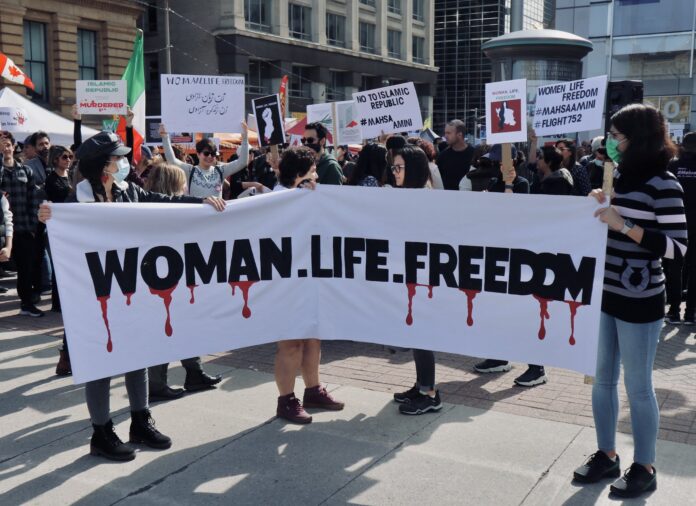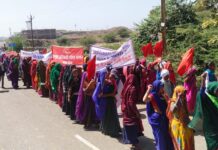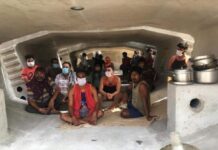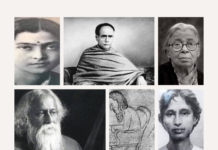On 13 September, an aspiring 22-year-old law student, Mahsa Amini, from the Kurdish Iranian community was arrested by the Gast-e Ershad (Guidance Patrol, popularly known as the Morality police) for not wearing a proper head cover and for immodest attire. She was visiting Tehran. She was with her brother when she was arrested. While at the police station, her brother was told that his sister died of a sudden heart attack and brain seizure. She was taken to Kasra Hospital in Tehran, where she lay comatose for 2 days. On 16 September, he passed away in the intensive care unit.
Witnesses to her detention said that she was abused and tortured by the police. News of her arrest and hospitalization broke out on the day of her death. While Iranian police denied any allegation of torture leading to her death, reports from the hospital and other pieces of evidence surfaced that contradicted the police narrative. Protests against the Gast-e Ershad began on 16 September, starting at the Kasra Hospital and grew. The government responded by instituting an internet blackout. Protests have continued to this day. Many prominent politicians in Iran have dismissed the protesters as rioters.

Hundreds have died in the protests and thousands have been arrested. The names of those who have died have renewed the strength of the protests, with the protests spreading across the country, including rural areas and non-Persian regions of Iran.
At the heart of the issue is Iran’s peculiar institution of Gast-e Ershad. The Gast-e Ershad is a special wing of the Iranian police dedicated to ensuring public morality and decency. They primarily enforce a dress code for women in public but have been known to come after men if they wear clothing that appears too imitative of foreign trends.
Since the 1979 Islamic Iranian Revolution, Iran implemented laws on public morality, including mandating that women wear a headscarf in public. For most of its history, these laws were enforced by the Islamic Revolution Committees, and later by the consolidated police force in 1991. The Gaste-e Ershad was established as a specialized squad of the police that reported directly to the Supreme Leader in 2005.
Gender and Economy
While the Islamic revolution lay the groundwork for enforced public morality, the women’s movement in Iran was always very active. At the local level, Iranian women were very involved in politics and made huge gains for themselves and society. This has been reflected in generations of local women’s leadership, high education levels for women, and female employment, even though high-level leadership were still held exclusively by men.
Family and Morality
The Iranian state, earlier, encouraged education for women and small families. Imam Khomeini, the Supreme leader of Iran, as well as other religious clerics, issues fatwas (religious opinions) that contraception is allowed in Islam. The government integrated family planning programs into the public health sector. The high rates of education of women meant that women were getting married later.
The family planning programs were successful, bringing the growth rate down from 4% in 1983 to 1% in 1995. The population growth rate remained stable. In the early 2000s, Iran reached the replacement fertility rate of 2 children per woman. At the same time, life expectancy grew from 53 years in 1983 to 68 years in 1995. Iran began to see an ageing population for the first time. In terms of family planning, Iran became a role model in the world, but internally, these shifts were seen as a crisis. As dangerous as overpopulation was, an ageing population was also seen as a crisis.
In 2005, Mahmoud Ahmadinejad, former mayor of Tehran and notable hardliner, became President of Iran. His Presidency was marked by a more aggressive nationalism than his predecessor. He was concerned that Iran needed to become strong, and that included having a larger population. He reversed many of the family planning policies of his predecessors. He was supported by the Supreme Leader, Ali Khamenei.

Khamenei was known for his conservative and pro-market politics, though he was not as popular as previous Supreme Leaders. Ahmadinejad’s Presidency gave Khamenei more range to implement his policies. That year, he established the Gast-e Ershad, which was dedicated to ensuring women in Iran wear hijabs, and would directly report to the Supreme Leader. This dedicated centralized cultural police force became notorious for harassing women.
Economic Factors
From the late 2010s, Iran was declared a rogue state by Western powers. Iran was then burdened with heavy sanctions. This led to a weak economy. The American Obama administration was on the edge of a reconciliatory agreement with the famous Iran Nuclear deal, but his successor, Donald Trump, returned relations to a status quo, leading to Iran being isolated once more.
Since 2010, and continuing to the current day, the Iranian economy hit women’s employment worse than men’s, leading to less independence for women in the country. Women have been systematically replaced by men in the workplace, leading to high rates of unemployment for women. As the economy got worse, women have been disappearing in Iranian public spaces at an alarming pace.
Sanctions have led to a weakening Iranian Rial. The value of the Rial is nearly a tenth of what it was 5 years ago. This has led to greater costs of living for the Iranian household. For women in Iran, this has meant more extreme feelings of hopelessness and insecurity. In Iranian society, women used to have certain spaces for the assertion, which has been curtailed as a result of the current economy.
Leading up to today
As the spaces for women have shrunk, the government doubled downed on restricting their independence by encouraging women to have more children and rolling back support for contraceptives. The power of the Gast-e Ershad waned slightly under the Presidency of moderate Hassan Rouhani but has resurged under the Presidency of the conservative Ebrahmin Raisi in 2021. Raisi believes in sex segregation and the Islamization of Universities.
In light of the growing hardlining of the government and the shrinking space for women in Iran, women in Iran have raised the slogan Zan, Zendegi, Azaadi (Women, Life, Freedom), calling for an end to the draconian dress code. The slogan originated in Kurdish (Jin, Jiyan, Azadi) as part of the women’s struggle in the Kurdish regions of Turkey and Syria, but has now spread to Iran as a feminist slogan calling for the respect of women, their lives and their freedom.
The author is a mathematician and political observer based in Bangalore.




























